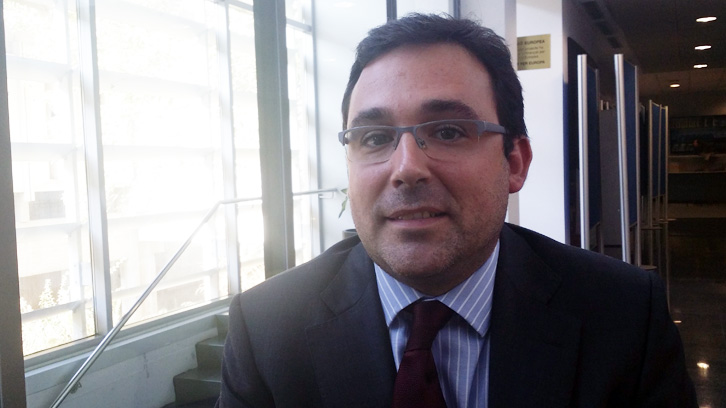“We want to inject nanorobots, guide them into the body and make them electrostimulate cell tissues or release drugs”

02/11/2017
What is the objective of the e-Minds Action?
The action focuses on the electrodeposition and corrosion of micro and nano systems. One of the great problems with electrodeposition is that it is losing ground in Europe, especially with regards to industry. The industries are moving to Asia. What Europe needs is more investment in new electrolytic processes and more competitivity. Maybe we cannot compete in conventional processes, but we can compete in the fully new ones.
The action also covers a part of corrosion at micro and nanoscales. This is an asoect that is often overlooked, nobody checks to see the corrosion cycle of these systems, nor are they excessively studied and no one yet has provided solutions to the durability of micro and nanosystems. For example, if you are looking to implant a micro or nanorobot into a body, it will move, but we must also monitor whether it deteriorates.
What is the role of the COST Action with regard to the industrials partners? What kind of a relationship is there between researcher and industry?
Sometimes the industry is not informed about our latest research results and vice versa. With this action, first we aim to make both parties aware of what is being done. Some cases are successful. For example, I myself have worked with a company through the COST Action in which we developed electrodeposition materials to be used to make devices. This basically is the role of the action: to make the industry aware of our endeavours and us learn about the needs of different firms.
You spoke on the effect of corrosion on nano and microrobots. What other challenges have you found in the miniaturisation of devices?
Not all materials are easy to miniaturise. Many techniques are used to manufacture micro and nanomaterials. The problem is that many of them, although they allow miniaturising materials, they cannot be integrated into the devices. You can make nanowires of whatever, but if these nanowires cannot be integrated into a manufacturing sequence in order to obtain the full device, then it is of no use. The electrodeposition, in this case, is a technique which is compatible with many manufacturing sequences. Mobile phones have parts that are electrodeposited. It is a very strong technique. If a material can be developed using this technique it will be less complicated to integrate it into the device.
Is there a limit in the miniaturisation of devices?
I imagine there is! When you miniaturise a material, it behaves differently. And surely there is a limit depending on the material. For example, when magnetic materials are reduced to a certain size they become superparamagnetic.Therefore, if I want to miniaturise a permanent magnet, i.e., one that maintains its magnetisation, and it becomes superparamagnetic, meaning it is no longer magnetic at all, my material loses all functionality. So, of course there are limits and this is one specific case.
At your laboratory in Zurich you research micro and nanorobots. What are they and for what can they be used?
We try to work with nanostructures, mainly with magnetoelectric nanowires. In addition to moving easily through magnetic fields, the same magnetic fields can make these robots generate an electric field, which can be exploited in many ways. One way is to electrostimulate cells. We conducted a study in which by using ultrasounds over piezoelectric surfaces we observed cell differentiation. We want to do that magnetically, i.e. apply a magnetic field, generate an electric field and electrostimulate cell tissues locally.
One of the main applications we are focused on is biomedical applications. The idea is to inject these robots into the human body, guide them in our case by using magnetic fields, transport them to the affected area and there they would perform their function, such as releasing a drug. Another application is related to using their locomotion as a way to clean wastewater.
While I was preparing the interview, I discovered that you are also a professional pianist and singer. How do you combine this with such top-level research?
Music is a very important part of my life, but I must confess that now I have much less time than before, although I always find time on the weekends, even if only an hour... I compose a lot more music than I perform and I have been doing this since I was sixteen. I work with several Catalan poets and compose the songs for their poems. This year we made an album with Vicenç Llorca, who studied Catalan philology at this university